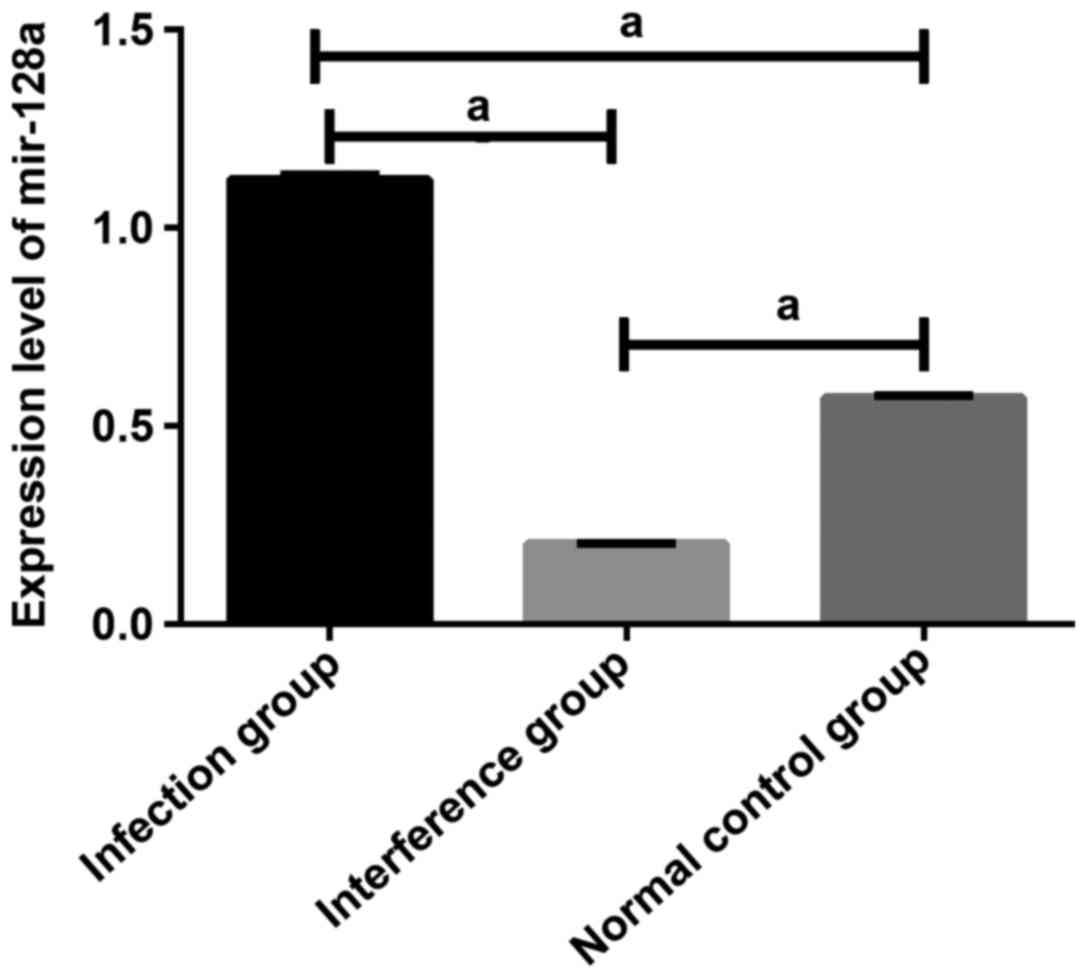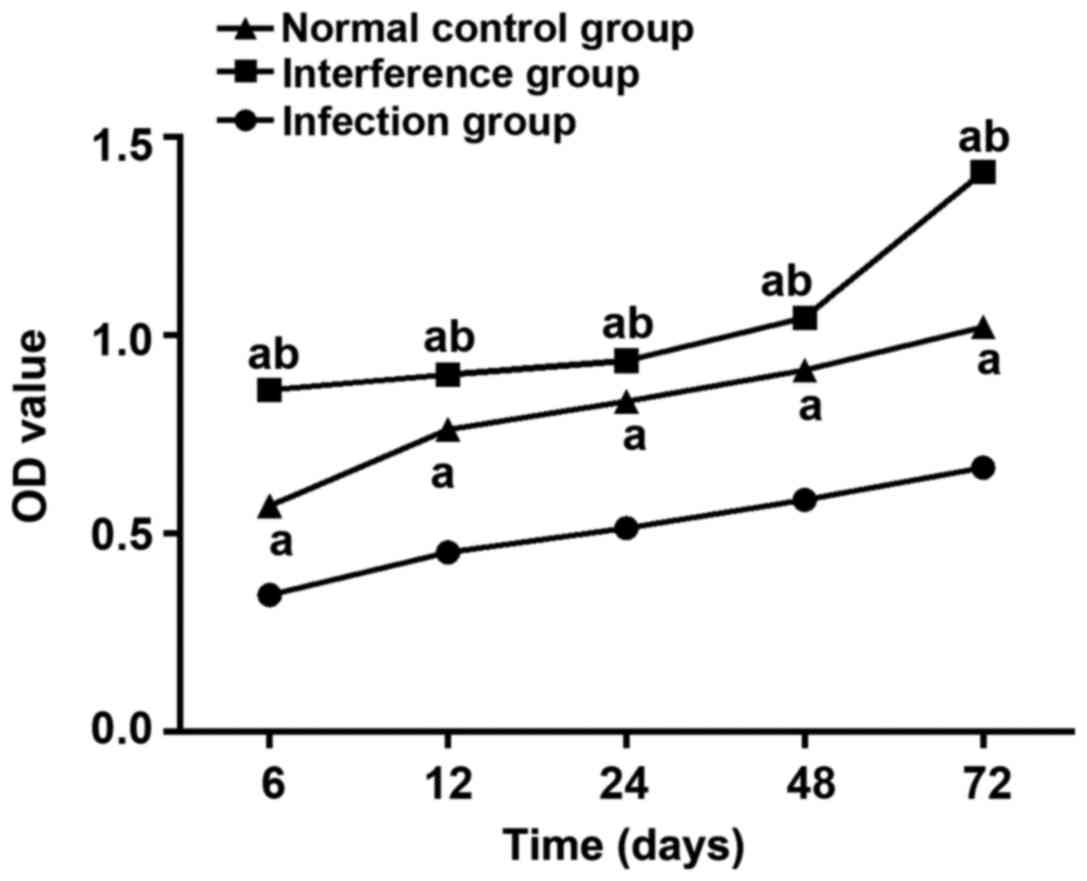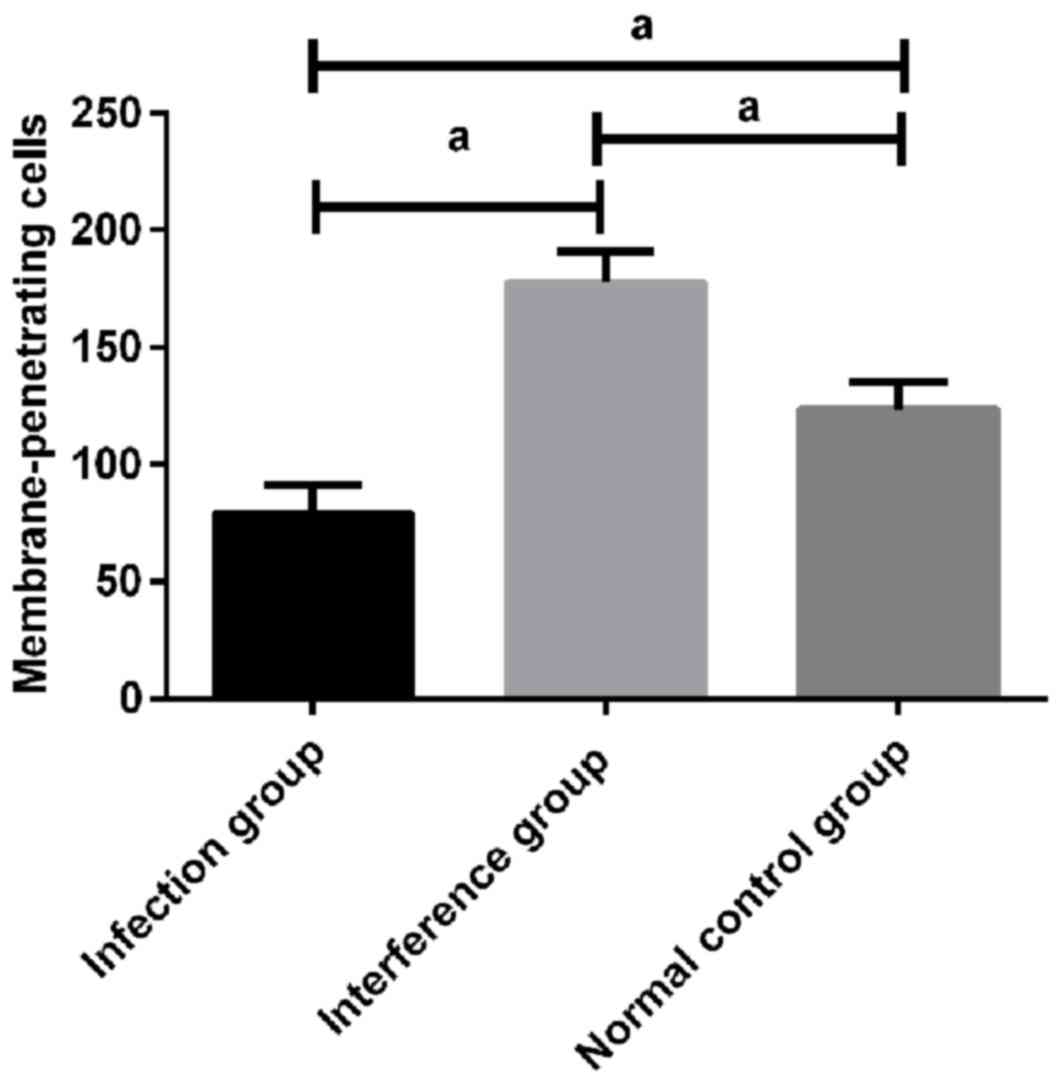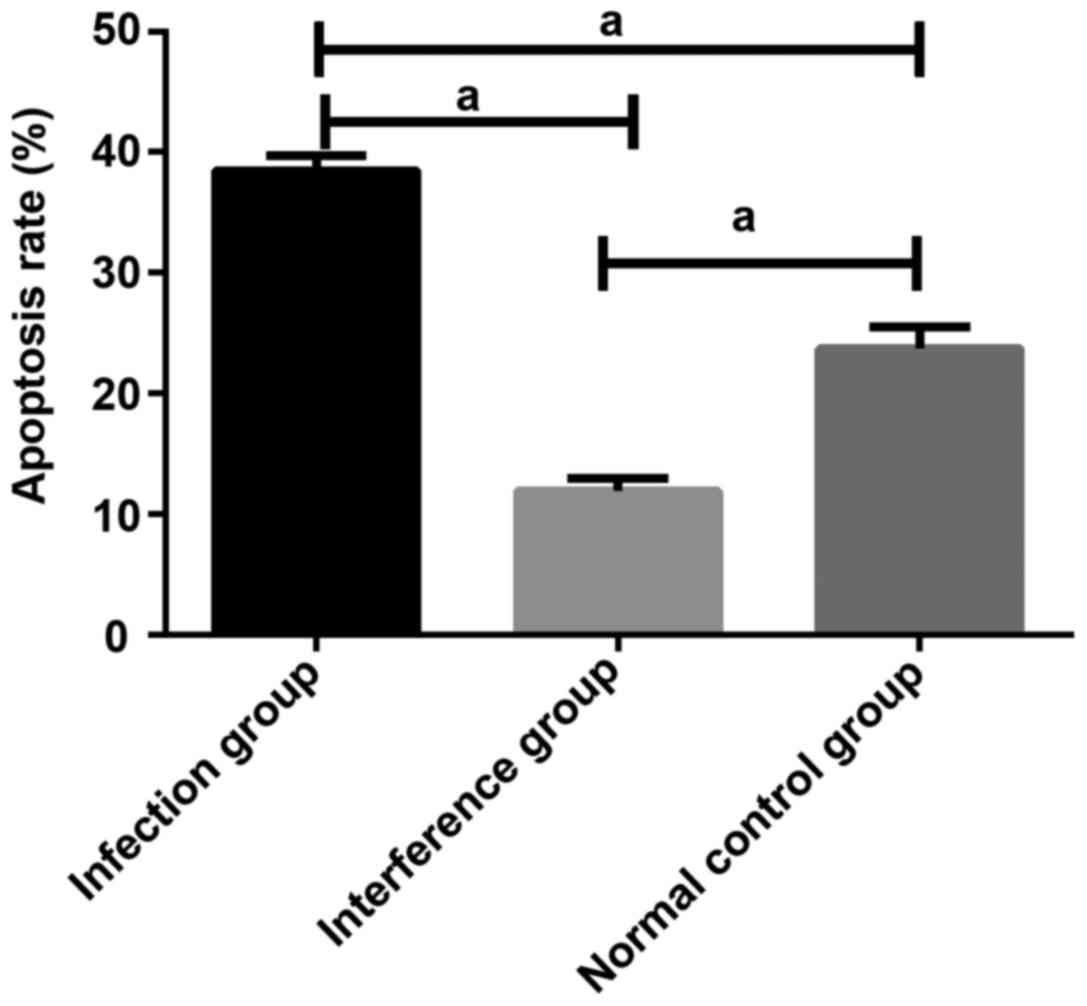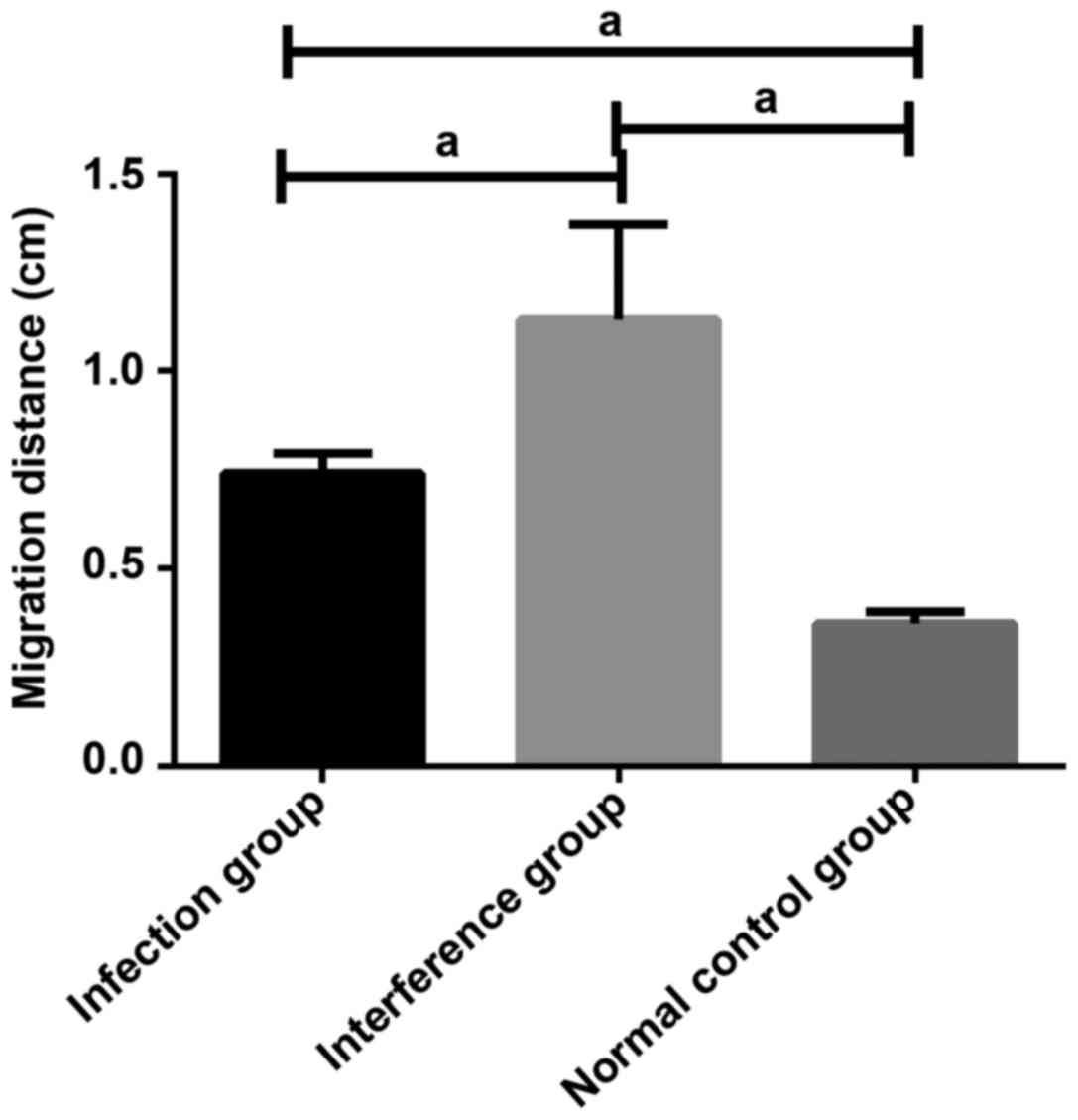|
1
|
Eckel-Passow JE, Lachance DH, Molinaro AM,
Walsh KM, Decker PA, Sicotte H, Pekmezci M, Rice T, Kosel ML,
Smirnov IV, et al: Glioma groups based on 1p/19q, IDH, and TERT
promoter mutations in tumors. N Engl J Med. 372:2499–2508. 2015.
View Article : Google Scholar : PubMed/NCBI
|
|
2
|
Vogelstein B, Kinzler KW, Parsons DW,
Zhang X, Lin CH, Leary RJ, Angenendt P, Papadopoulos N, Velculescu
V, Parmigiani G, et al: Genetic alterations in isocitrate
dehydrogenase and other genes in malignant glioma. US Patent
2017/0081730 A1. Filed November 16, 2016; issued. March
23–2017.
|
|
3
|
Ceccarelli M, Barthel FP, Malta TM,
Sabedot TS, Salama SR, Murray BA, Morozova O, Newton Y, Radenbaugh
A, Pagnotta SM, et al; TCGA Research network, . Molecular profiling
reveals biologically discrete subsets and pathways of progression
in diffuse glioma. Cell. 164:550–563. 2016. View Article : Google Scholar : PubMed/NCBI
|
|
4
|
Noch EK, Ramakrishana R and Magge R:
Challenges in the treatment of glioblastoma: Multisystem mechanisms
of therapeutic resistance. World Neurosurg. 116:505–517. 2018.
View Article : Google Scholar : PubMed/NCBI
|
|
5
|
Johnson BE, Mazor T, Hong C, Barnes M,
Aihara K, McLean CY, Fouse SD, Yamamoto S, Ueda H, Tatsuno K, et
al: Mutational analysis reveals the origin and therapy-driven
evolution of recurrent glioma. Science. 343:189–193. 2014.
View Article : Google Scholar : PubMed/NCBI
|
|
6
|
Venugopal C, McFarlane NM, Nolte S,
Manoranjan B and Singh SK: Processing of primary brain tumor tissue
for stem cell assays and flow sorting. J Vis Exp. 67(pii):
41112012.
|
|
7
|
Leidinger P, Backes C, Meder B, Meese E
and Keller A: The human miRNA repertoire of different blood
compounds. BMC Genomics. 15:4742014. View Article : Google Scholar : PubMed/NCBI
|
|
8
|
Brabants E, Pyfferoen L, Everaert C,
Tavernier SJ, Heyns K, De Cabooter N, Wagemans G, Deswarte K,
Hammad H, de wever O, et al: Specific myelomonocytic cells heavily
infiltrate orthotopic lung tumors and display a hypoxia-driven
miRNA expression signature that directs tumor-supporting functions
and negatively impacts on clinical outcome. Cancer Immunol Res. 4
Suppl 11:Abst A091. 2016. View Article : Google Scholar
|
|
9
|
Rupaimoole R, Calin GA, Lopez-Berestein G
and Sood AK: miRNA deregulation in cancer cells and the tumor
microenvironment. Cancer Discov. 6:235–246. 2016. View Article : Google Scholar : PubMed/NCBI
|
|
10
|
Bleckmann A, Leha A, Artmann S, Menck K,
Salinas-Riester G, Binder C, Pukrop T, Beissbarth T and Klemm F:
Integrated miRNA and mRNA profiling of tumor-educated macrophages
identifies prognostic subgroups in estrogen receptor-positive
breast cancer. Mol Oncol. 9:155–166. 2015. View Article : Google Scholar : PubMed/NCBI
|
|
11
|
Guo X, Cao C, Sun J, Zhang D, Liu L and Wu
D: miR-128a is up-regulated in hepatocellular carcinoma and
promotes tumor cell proliferation by targeting RND3. Nan Fang Yi Ke
Da Xue Xue Bao. 34:1408–1413. 2014.(In Chinese). PubMed/NCBI
|
|
12
|
Yamada N, Noguchi S, Kumazaki M, Shinohara
H, Miki K, Naoe T and Akao Y: Epigenetic regulation of
microRNA-128a expression contributes to the apoptosis-resistance of
human T-cell leukaemia jurkat cells by modulating expression of
fas-associated protein with death domain (FADD). Biochim Biophys
Acta. 1843:590–602. 2014. View Article : Google Scholar : PubMed/NCBI
|
|
13
|
Livak KJ and Schmittgen TD: Analysis of
relative gene expression data using real-time quantitative PCR and
the 2(-Delta Delta C(T)) method. Methods. 25:402–408. 2001.
View Article : Google Scholar : PubMed/NCBI
|
|
14
|
Topalian SL, Sznol M, McDermott DF, Kluger
HM, Carvajal RD, Sharfman WH, Brahmer JR, Lawrence DP, Atkins MB,
Powderly JD, et al: Survival, durable tumor remission, and
long-term safety in patients with advanced melanoma receiving
nivolumab. J Clin Oncol. 32:1020–1030. 2014. View Article : Google Scholar : PubMed/NCBI
|
|
15
|
Bettegowda C, Sausen M, Leary RJ, Kinde I,
Wang Y, Agrawal N, Bartlett BR, Wang H, Luber B, Alani RM, et al:
Detection of circulating tumor DNA in early- and late-stage human
malignancies. Sci Transl Med. 6:224ra242014. View Article : Google Scholar : PubMed/NCBI
|
|
16
|
Buckner JC, Shaw EG, Pugh SL, Chakravarti
A, Gilbert MR, Barger GR, Coons S, Ricci P, Bullard D, Brown PD, et
al: Radiation plus procarbazine, CCNU, and vincristine in low-grade
glioma. N Engl J Med. 374:1344–1355. 2016. View Article : Google Scholar : PubMed/NCBI
|
|
17
|
Mellinghoff IK, Touat M, Maher E,
DeLaFuente M, Cloughesy TF, Holdhoff M, Cote G, Burris H, Janku F,
Huang R, et al; ACTR-46. AG120, a first-in-class mutant IDH1
inhibitor in patients with recurrent or progressive IDH1 mutant
glioma, . Results from the phase 1 glioma expansion cohorts. Neuro
Oncol. 18 Suppl 6:vi122016. View Article : Google Scholar
|
|
18
|
Nie QM, Lin YY, Yang X, Shen L, Guo LM,
Que SL, Li XX, Ge JW, Wang GS, Xiong WH, et al:
IDH1R¹32H decreases the proliferation of U87 glioma
cells through upregulation of microRNA-128a. Mol Med Rep.
12:6695–6701. 2015. View Article : Google Scholar : PubMed/NCBI
|
|
19
|
Venkataraman S, Alimova I, Fan R, Harris
P, Foreman N and Vibhakar R: MicroRNA 128a increases intracellular
ROS level by targeting Bmi-1 and inhibits medulloblastoma cancer
cell growth by promoting senescence. PLoS One. 5:e107482010.
View Article : Google Scholar : PubMed/NCBI
|
|
20
|
De Luca L, Trino S, Laurenzana I,
Tagliaferri D, Falco G, Grieco V, Bianchino G, Nozza F, Campia V,
D'Alessio F, et al: Knockdown of miR-128a induces Lin28a expression
and reverts myeloid differentiation blockage in acute myeloid
leukemia. Cell Death Dis. 8:e28492017. View Article : Google Scholar : PubMed/NCBI
|
|
21
|
Ye L, Yu G, Wang C, Du B, Sun D, Liu J, Qi
T, Yu X, Wei W, Cheng J, et al: MicroRNA-128a, BMI1 polycomb ring
finger oncogene, and reactive oxygen species inhibit the growth of
U-87 MG glioblastoma cells following exposure to X-ray radiation.
Mol Med Rep. 12:6247–6254. 2015. View Article : Google Scholar : PubMed/NCBI
|



